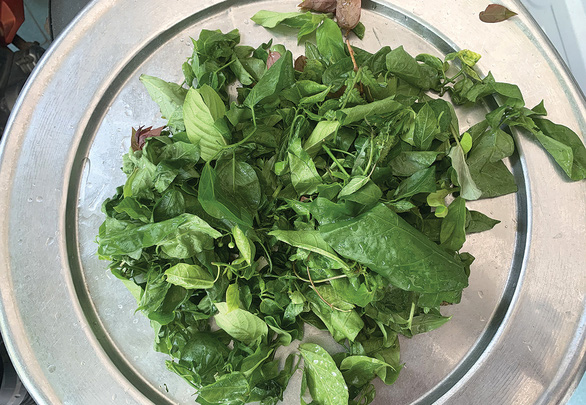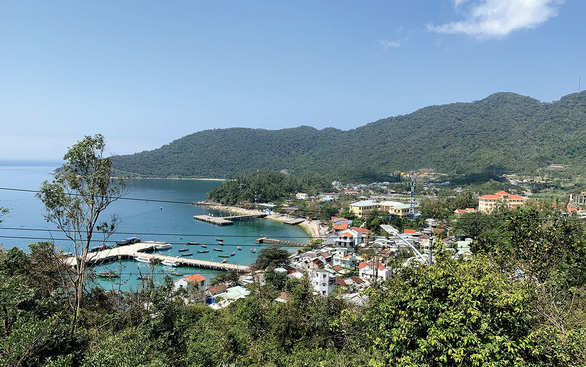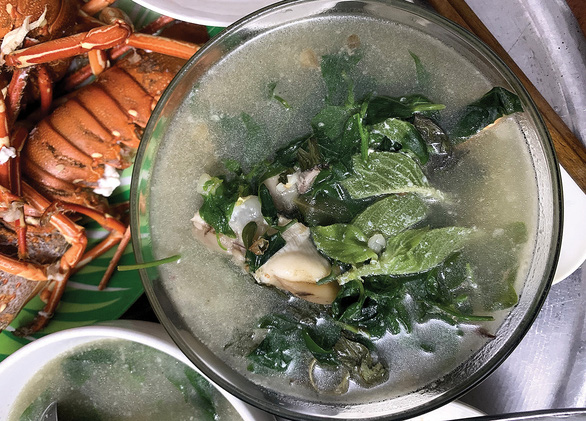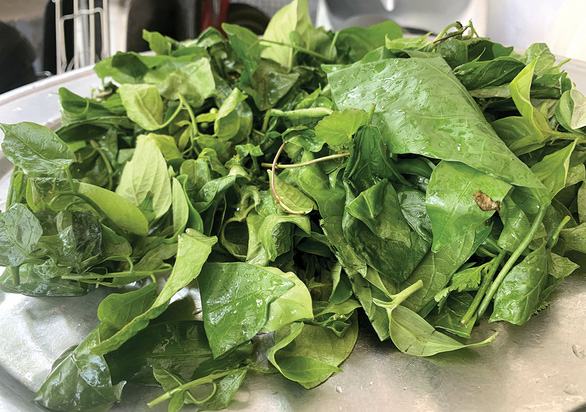The secret ingredient that spices up local dishes with unmistakable aromas, 'forest vegetables' are nature’s gift from the robust woodlands of Cu Lao Cham, or Cham Islands, which are located just 15 kilometers away off central Vietnam’s Quang Nam Province.
Little bags of vegetables are the most sought-after souvenirs when tourists visit the small islands.
The Cham Islands constitute a group of eight small islands which form the Cu Lao Cham Marine Park, but only one island is inhabited by people.
This tourist route is strictly monitored by Quang Nam administrators who fear that an influx of visitors will affect the Cu Lao Cham Marine Park.
Specialties that the place offers include abalones, sea urchins, crabs, and edible bird’s nests, which all prove much more appetizing than what is offered in the restaurants along the well-trodden tourist shore of Hoi An.
Fresh seafood on the islands is highly sought after by tourists; however, the forest vegetables, the true star ingredient there, are not known by many since they are only offered in limited supply.
Often called 'forest vegetables' or 'island vegetables,' they are actually a mishmash of various leafy varieties found in Cham Islands’ forest, traditionally cooked with prawns and crabs caught in the area.
|
|
| A bird’s-eye view of Cu Lao Cham (Cham Islands) in Quang Nam Province, Vietnam. Photo: B.D. / Tuoi Tre |
Among the most fastidious eaters of Vietnam, food connoisseurs in Hanoi have a soft spot for the exotic flavor of greens on Cham Islands.
In a Hanoian’s cookbook, leafy greens from the islands with crabs harvested on the central shore make a bowl of soup with succulence matched by none.
Visitors looking for the latter ingredient must take a boat trip from the shore of Vietnam’s tourism hub Hoi An City to the islands, which may not be available during days of rough seas.
According to Le Thi Bich Cong, a public servant-turned-restaurateur on the islands, forest vegetables are the hidden gem that is treasured by epicures all over Vietnam.
The product has managed to charm many customers from the very first taste, inviting them to come back for more.
Local residents take pride in their home being a plastic-free island, where no traces of synthetic packages can be found in sight.
For this reason, the bags that come with forest vegetables are all recyclable ones, with some pieces handcrafted by locals.
However, as the resource is limited, there is a set quota for the volume of vegetables to be sold, which makes the packets of greens from Cham Islands more of a specialty.
“Local harvesters only go pick the vegetables in the early morning," Cong said.
"They will pick the freshest buds out of a variety of greens, then store them in hand-sewn bags before bringing them home.”
The products are not brought to the market, but only sold to family members and acquaintances.
“[The vegetables] are good partly because they're exclusive,” Cong said, adding that she named herself 'Rau Rung' (Forest vegetables) on Facebook as they are the ingredient that nurtured her through her childhood years.
|
|
| A bowl of seafood soup with assorted vegetables on Cham Islands in Quang Nam Province, Vietnam. Photo: B.D. / Tuoi Tre |
Medicinal values
Leafy greens from the woods of Cham Islands have more than one use: a certain assortment of leaves, branches, and roots of herb trees can be used as tea when dried properly.
There are some 80 varieties of herbs and greens considered edible from the forest, but around 35 make up the essential repertoire of Cham Islands vegetables, according to senior citizens.
Some of the greens are plants that are frowned upon by people from the mainland, such as the pungent Ageratum conyzoides flower.
Before the arrival of tourism, the treasured greens were only circulated and consumed by islanders.
As supply is finite, households would take turns harvesting to ensure the trees are able to regenerate.
|
|
| Assorted vegetables are served on a platter on Cham Islands in Quang Nam Province, Vietnam. Photo: B.D. / Tuoi Tre |
Locals believe that vegetables on their islands are not merely food, but also medicine which helps cleanse the body, detox the liver, and control blood sugar levels.
In a normal meal of Cham Islands people, both leaves from woody trees and herbaceous stems can be found, which creates slight notes of tartness when combined together.
Besides providing a kick of flavor for crab soups, the woodland vegetables can also be served blanched with fish sauce as a dipping condiment and the blanching water on the side as a refreshing soup.
Set at a rather high price of VND50,000 ($2.17) for a tiny bag, Cham Islands vegetables are not available to everyone, as only a few who have the connection can buy them.
The veil of esotericism, in a sense, is what makes each small bag of greens a soulful delicacy that leaves an unforgettable experience to those who have the privilege to taste it.
Like us on Facebook or follow us on Twitter to get the latest news about Vietnam!

























